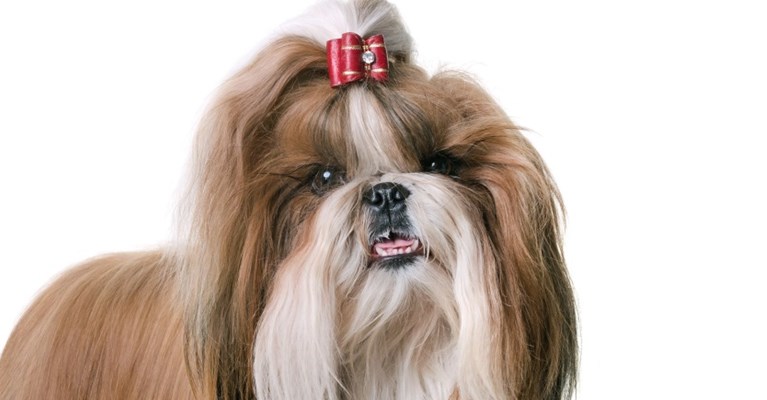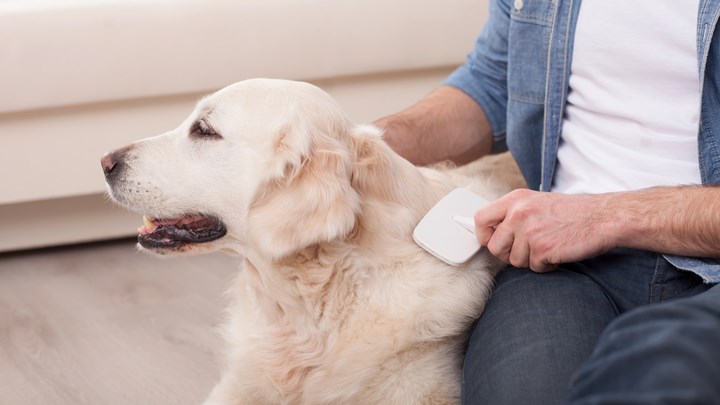Pampered Pets: Top DIY Grooming Tips

Seeing your four-legged friend freshly groomed, with a slick new haircut, clipped nails and a clean coat, is a lovely feeling. However, grooming your pet isn’t just a good opportunity to make them look cute and to get any unwanted mats out. It’s also a great time to check your pet for any abnormalities, such as lumps, ticks, and any cuts or grazes they may have picked up whilst out and about.
Most treatments can be done from home, so you don’t always have to visit a groomer. Here at Asda Money, we want to make checking and cleaning your furry friend as easy as possible, so here are our top DIY tips on pampering your pet.
Nail Clipping
Just like young children, dogs and cats don’t particularly enjoy getting their nails cut. It can be a struggle trying to settle your pet when clipping their nails as they find the process uncomfortable, meaning it’s likely that they’ll try to escape your grasp.
Your pet’s nails shouldn’t need clipping very often if they frequently walk outdoors, as hard surfaces act as a natural file. Most cats and dogs who spend a lot of time indoors need their nails clipping every one-to-two weeks, but the basic rule is to do it whenever you feel that they’re getting too long. Keeping them trim will help to prevent their nails growing inwards and causing infection.
You should start clipping dog’s nails and cat’s claws as early on in their lives as possible to get them used to the process. Hold their paws as gently as possible and snip off just a small bit at the end of each nail so you don’t get too close to the skin. It will be extremely uncomfortable for your pet if you cut the ‘quick’, the blood vessel running through their nails. If it’s something you don’t feel comfortable doing, or you don’t own special nail clippers, go to a groomer or the vets and they’ll do it for you.
Video sourced from eHow
Bathing
Some pets would probably prefer to never have a bath, but it plays an important role in keeping them healthy. Generally, cats don’t tend to need baths as they wash themselves naturally. Their tongues are covered with small barbs known as papillae, which pull out loose hairs and remove dust. But, if they’ve rolled in something or have long hair which has gotten matted, a bath is a great idea.
When bathing cats, you need to make the process as quick as possible. Fill the sink with a couple of inches of tepid water and wash your feline friend from their shoulders to their tail using special cat shampoo. A good tip is to use a damp flannel to wash their head, as cats tend to dislike having their face splashed with water. If your cat is long haired, a hair dryer could be needed, but put it on the lowest and coolest setting as the sound might scare them and the heat could burn their skin.
Bathing a dog is, generally, a lot easier. Once a month should be fine for most, but it all depends on the breed and coat. For example, dogs with an oily coat, such as Basset Hounds, might need a bath once a week, whereas short-haired breeds like Beagles can go for months at a time without a bath. Depending on the size of your dog, you can either wash them in the sink, the bath or even with the garden hose if they’ve been playing in the mud and it’s a warm enough temperature outside. When bathing your furry friend, it’s worth remembering to brush their coat beforehand, use lukewarm water, talk to them in a calming voice, use special pet shampoo, and always reward them with a treat afterwards for being good.
Brushing
Brushing your pet’s coat is an essential part of grooming. It’s quick and easy, and it can be done from home. Regular brushing will remove any excess hair from their coat, meaning it will reduce the amount you find on your sofa and carpet! Brushing is also a great time to search for any lumps, bumps, fleas, ticks or any other abnormalities.
It’s simple to figure out how often your pooch needs brushing. If they have long hair, such as a Collie or a Maltese, they need to be brushed weekly or more as their coat is more likely to get tangled. If you have a short haired dog, such as a Beagle or Greyhound, they don’t have as much hair to mat, meaning they can be brushed once every few weeks. Whatever breed of dog you have, you should always brush in the direction that the coat goes, and take the time to untangle any knots so you don’t pull too hard on them.
Just like dogs, you should always brush a cat in the direction that the coat lays, but make sure you take extra care around the belly and chest area. Long haired cats, such as a Persian or Ragdoll, may need brushing every day. However, shorthaired cats, including British Shorthairs or a Siamese, will be fine just being brushed twice a week.

Hair Cutting
Knowing if you should cut your pet’s hair can be difficult, as there are many types of breeds of both cats and dogs that need different attention. If you have a cat, a haircut is probably unnecessary. The main reasons people cut their cat’s hair is to help a matted coat or to reduce hairballs. However, it’s advised that you take your feline friend to a professional if they need a haircut, as many cats get frightened of scissors or anything sharp. A good way to deal with this is to introduce them to the cutting process early on in life so they can get used to it.
A lot of dog owners choose to give their dog a haircut themselves. If you’re doing it yourself, make sure you have a full set of grooming scissors, so you can trim hair correctly in the different areas. The scissors have to be sharp, and a good tip to make cutting a little easier is to put a few drops of scissor oil on the blades before you start. Many owners choose to give their pooch a haircut after a bath, as hair is generally easier to work with when it’s slightly damp.
If you’re cutting your dog’s hair yourself, a good idea is to save the sensitive areas, such as their face, ears and tail until last. If your dog does start getting agitated during its grooming session, at least you’ll have trimmed the majority of the body. No matter where you’re cutting, be sure to keep a comb between the dog’s skin and the scissors to prevent any accidental cuts. Remember, if you don’t feel comfortable cutting your pet’s hair, leave it to a professional.
Dental Care
Our pet’s teeth are something that many of us can be guilty of neglecting, but there are many diseases they could catch if you don’t take enough care. From bleeding gums and bad breath to tooth loss and refusing to eat, there are a number of warning signs that can highlight dental neglect.
Like humans, both dogs and cats need their teeth brushing to keep them clean and healthy. Although three to four times a week is fine, daily would be ideal, but we understand this can be hard. When brushing your pet’s teeth, make sure you use a toothpaste or gel that’s specifically designed for dogs or cats, as human toothpaste can cause an upset stomach.
If your pet doesn’t like people touching their teeth, chews and dental sticks are a great way to keep their mouth healthy. Dental sticks and chews will help to reduce tartar build up, and there are plenty of different brands available from most supermarkets. However, try not to give them too many, as these treats still need to fit in with their balanced diet.
Video sourced from BanfieldPetHospital
Whether you have a lovable pooch or a cute cat, grooming is an essential part of keeping your pet healthy. If you do stumble across any abnormalities, make sure you take them to the vet as soon as possible. When you first bring your furry friend home, be sure to get pet insurance, so you’re covered in case the worse does happen. Here at Asda Money we have a range of pet insurance cover types available. Find out more about Asda Money Pet Insurance here. Pre-existing medical conditions are not covered.